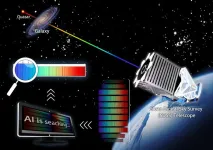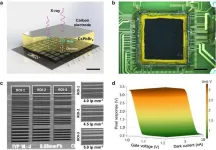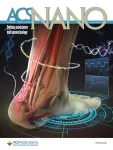(Press-News.org)
Mobile phones have become invaluable for receiving emergency alerts such as weather warnings, evacuation notices and notifications about missing persons. In Japan, where earthquakes are frequent, they are vital for delivering earthquake warnings and advising people to take protective actions beforehand. To deal with such situations promptly, the Earthquake Early Warning (EEW) system sends out notifications to areas expected to experience strong tremors by detecting primary seismic waves (P-waves) that arrive before the secondary waves (S-waves). However, the short time between receiving the notification and the arrival of S-waves requires immediate response from individuals in affected areas.
But this is not always the case as Professor Kazuya Nakayachi from the Faculty of Psychology, Doshisha University, Japan, explains: “Designers of the disaster information system assume that those who receive an emergency alert will immediately take protective action, but this is rarely the case. People stay still looking at their cell phone screens receiving the alert.” Surveys conducted in Japan found that despite advanced warnings, people fail to take protective actions.
To determine why individuals might not act upon receiving such warnings delivered through mobile phones, Prof. Nakayachi, along with Dr. Ryosuke Yokoi from Kyoto Tachibana University and Dr. James Goltz from Kyoto University conducted two surveys, investigating people’s responses immediately after receiving EEW alerts on their mobile phones between 2021 and 2023. Their findings, published online in the International Journal of Disaster Risk Reduction on 15 April 2024, aim to improve the effectiveness of EEW alerts to reduce the risk of injury or fatalities during earthquakes.
The researchers collected responses from participants affected by the 6.0 magnitude earthquake in Chiba Prefecture, which occurred on October 1, 2021, and the 6.3 magnitude earthquake in Ishikawa Prefecture on May 5, 2023. To determine the initial reactions to the alerts, the participants were asked the following question: “When you received the EEW alert on your mobile phone, what did you do first and what did you do next?”
Out of 3000 participants who experienced the earthquake at Chiba, about 34% said that their first reaction was to pay attention to their mobile phones by listening to the alert or checking the screen. Out of the 829 participants who checked their phone screens as their first reaction, only 51 participants said that they took protective measures as their second reaction. But, 36% of the participants said that they did not take any action upon receiving the alert. Instead, they waited for the tremors to begin and stayed still. Only 7% took immediate steps to protect themselves, and 10% listed protective actions as their second response.
Similar reactions were observed in the group from Ishikawa Prefecture. Out of 1000 responses, 46% of participants reported paying attention to their mobile phones as their first reaction, with only 20 participants taking protective measures as their second reaction. Additionally, 30-40% of participants did not take any protective actions, and less than 10% acted immediately upon receiving the EEW alert. The results suggest that the EEW alert was ineffective at prompting the intended response from the recipients.
To address this, the researchers suggest three measures. First, to prevent people from wasting time unnecessarily looking at their phones for more information, further, they propose conducting nationwide emergency drills to train people to react immediately when peoples receive EEW alerts on their phones. Second, they recommend maintaining a safe environment at home, work, and school by securing furniture and storing heavy items near the ground. This can help protect people when it is difficult to take protection actions during an earthquake. Lastly, the researchers suggest that adding clear instructions like 'protect yourself now' to EEW alert messages would encourage people to react immediately.
With the widespread availability of mobile phones, many governments are increasingly sending alerts through these devices. However, as the study shows, it is not just about delivering the message; the system needs to ensure that the alert motivates people to act.
“To improve the effectiveness of warning systems, researchers and practitioners should consider not only the delivery of warnings to the public but also track their behavioral and psychological reactions after receiving these warnings,” says Prof. Nakayachi.
About Professor Kazuya Nakayachi from Doshisha University, Japan
Kazuya Nakayachi is a professor in the Faculty of Psychology at the Department of Psychology. He specializes in the fields of risk perception, trust, and humanities & social sciences, with a focus on social psychology. He has held prestigious positions in various universities and research societies and has published numerous papers on risk analysis, human behavior, and disaster preparedness in reputed scientific journals.
Funding information
This work was supported by JSPS KAKENHI [grant number 20H01756]
Media contact:
Organization for Research Initiatives & Development
Doshisha University
Kyotanabe, Kyoto 610-0394, JAPAN
E-mail:jt-ura@mail.doshisha.ac.jp
END
Homelessness doesn’t only happen to young people but also affects older adults in growing numbers, write authors in an analysis in CMAJ (Canadian Medical Association Journal) that describes this emerging crisishttps://www.cmaj.ca/lookup/doi/10.1503/cmaj.231493.
People experiencing homelessness are considered older adults at age 50, as visible aging is often evident at younger ages in individuals experiencing homelessness compared with individuals who have secure housing. Individuals experiencing homelessness often develop chronic ...
More than 1 in 5 adults in Canada did not have access to primary care, with large regional gaps in access, found new research in CMAJ (Canadian Medical Association Journal) https://www.cmaj.ca/lookup/doi/10.1503/cmaj.231372.
“Translated to the population of Canada, our survey estimates that more than 6.5 million adults across the country don’t have access to a family doctor or nurse practitioner they can see regularly,” says Dr. Tara Kiran, a family physician and researcher at the MAP Centre for Urban Health Solutions at St. Michael’s Hospital, Unity Health Toronto and the University ...
Washington (May 14, 2024) — Studies examining the risks of GLP-1 weight-loss drugs, distinguishing alpha-gal syndrome from other GI disorders, and comparing medications to slow the progression of liver disease in patients with alcohol-use disorder will be presented this week at Digestive Disease Week (DDW) 2024. Abstracts are available to registered media. Embargos lift at 12:01 a.m. EDT on the day they are presented.
Here are summaries of the new research:
Re-examining the risks of gastrointestinal adverse events associated with glucagon-like peptide-1 receptor agonists for weight loss with more stringent criteria on a comprehensive ...
An exceptional $8 million, 10-year philanthropic investment will spearhead new treatments for pancreatic cancer and create a new dedicated research centre at WEHI.
The centre, to be established thanks to an investment by Australian business leader and WEHI President Jane Hemstritch AO, aims to help close the significant survival gap between pancreatic cancer and other cancers.
The Hemstritch Centre of Excellence for Pancreatic Cancer Research will provide a leading team of scientists and clinicians with long-term funding to ask big research questions. They aim to make major ...
Recently, an international team led by Prof. GE Jian from the Shanghai Astronomical Observatory of the Chinese Academy of Sciences conducted a search for rare weak signals in quasar spectral data released by the Sloan Digital Sky Survey III (SDSS-III) program using deep learning neural networks. By introducing a new method to explore galaxy formation and evolution, the team showcased the potential of artificial intelligence (AI) in identifying rare weak signals in astronomical big data. This study was published ...
Technology (SIAT) of the Chinese Academy of Sciences, in collaboration with researchers at Central China Normal University, have developed a high-performance perovskite X-ray complementary metal-oxide-semiconductor (CMOS) detector for medical imaging.
The study was published in Nature Communications on Feb. 21.
X-ray imaging is vital for the diagnosis and treatment of cardiovascular and cancer diseases. Direct-conversion X-ray detectors made of semiconductor materials exhibit superior spatial and temporal resolution at lower radiation doses compared to indirect-conversion detectors made of scintillator materials. However, the currently available semiconductor ...
By Jade Boyd
Special to Rice News
Pioneering Rice University chemist Gustavo Scuseria has won the 2024 Schrödinger Medal from the World Association of Theoretical and Computational Chemists.
Awarded annually to a single recipient, the medal recognizes an outstanding body of work in theoretical and computational chemistry. Scuseria has pioneered quantum computational methods that are widely used to study the complex quantum states and electronic properties of a wide range of molecules and materials. In awarding the medal, ...
□ DGIST (President Kunwoo Lee) announced on the 16th (Tue) that a research team led by Professor Jaehong Lee of the Department of Robotics and Mechanical Electronics has developed a new human implantable, wireless, health monitoring electronic suture system through joint research with a team from Yonsei University and Korea University. The developed wireless electronic suture can be easily applied in the medical field and is expected to be used in various orthopedic fields, such as patient-customized rehabilitation.
□ ...
KYOTO, Japan – May 20, 2024
Infertility affects approximately 1 in 6 people in their lifetime worldwide according to the World Health Organization (WHO). Infertility —as defined by the American Society for Reproductive Medicine (ASRM)— is a disease, condition, or status characterized by “the inability to achieve a successful pregnancy based on a patient’s medical, sexual, and reproductive history, age, physical findings, diagnostic testing, or any combination of those factors” or requiring medical intervention such as the use of mature donor gametes “to achieve a successful pregnancy ...
Ikoma, Japan – With the growth of the Internet of Things, sustainable solution for powering wireless sensors and devices are considered important. Thermoelectric generators, for example, which have the ability to convert waste heat into electricity can offer a sustainable solution. Researchers around the world have been working on such solutions. A research team, led by Masakazu Nakamura from Nara Institute of Science and Technology (NAIST), Japan has also been working on flexible wearable thermoelectric generators that produce electricity from body heat by sewing nanomaterial called carbon nanotubes (CNTs) into fabric.
Effective ...








